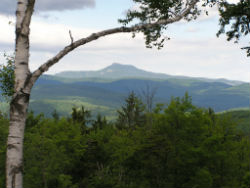Map << Using BioFinder << Interpreting Results << Tips & Tricks << Creating BioFinder << VT Conservation Design
Vermont Conservation Design

Vermont Conservation Design is the data and the vision that is delivered through BioFinder. It is a tool that identifies features at the landscape and natural community scales that are necessary for maintaining an ecologically functional landscape – a landscape that conserves current biological diversity and allows species to move and shift in response to climate and land-use changes. At the landscape scale, users can see patterns in Vermont’s forests, waterways, and the places that connect both into functional networks. At the community scale appear significant natural communities, lakes representing high quality examples of different lake types, and similar important features that are vital to assemblages of plants and animals. Finally, a user can see components that support individual species—the habitats and locations on which rare and uncommon species rely, for example. On the map, community and species scale components are combined.
At all scales, Vermont Conservation Design identifies locations of ecological priority. These are divided into priority or highest priority areas, to allow users to make informed decisions about the locations most suitable for development and those on which to focus conservation efforts.
What makes Vermont Conservation Design unique is that instead of looking at one ecological component at a time—wetlands, rare species, large forest blocks, etc.—Vermont Conservation Design takes a holistic approach, identifying how these components work together to create a functional network of habitat that can be used by most Vermont species. In other words, all components are combined at each scale to identify overall priorities.
Vermont Conservation Design - Summary Report - February 2018
Vermont Conservation Design - Landscapes - December 2015
Vermont Conservation Design - Natural Community and Habitat Technical Report - March 2018


